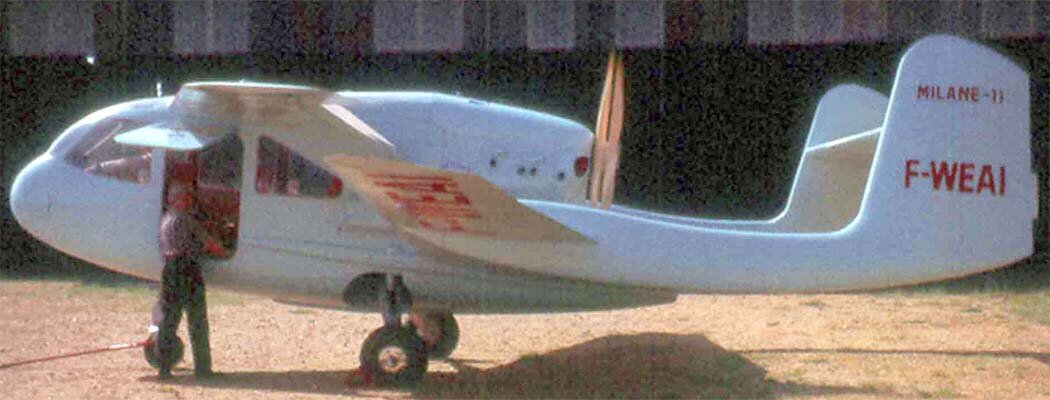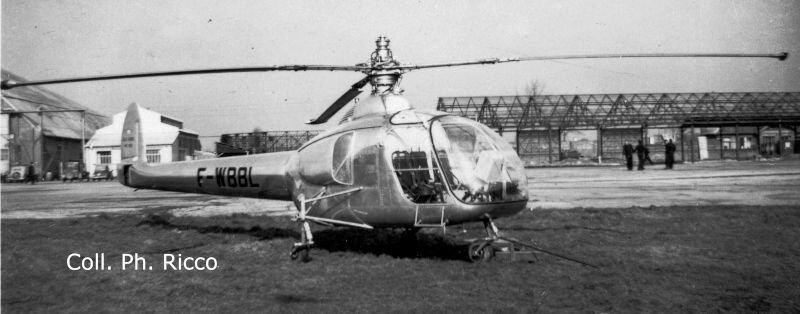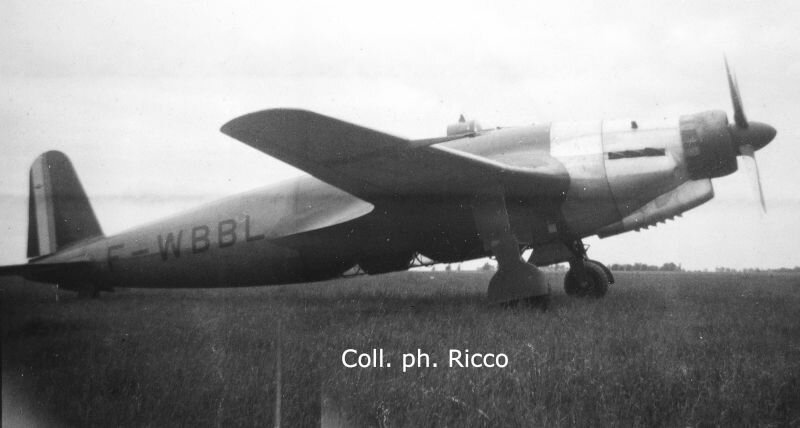- Joined
- 25 June 2009
- Messages
- 14,256
- Reaction score
- 4,600
Those familiar with French postwar prototypes have certainly come across the Millet-Lagarde M.L.10 "Milane".
It was a 1949 four-seat tourism prototype developed by Jacques Lagarde after Nenadovitch patents, and built by Ateliers Brodeau.

According to many sources, there was only one "Milane" built [F-WEPK], while a second similar aircraft, usually called the "Milane II" [F-WEAI] is supposed to have been produced by the Société de Construction Aéronautique du Maine (S.C.A.M.) as the C.50.
Most sources, even trustworthy ones, will repeat that scenario... And yet, it is WRONG.
The confusion here stems from a rare case of registration reuse. The registration [F-WEAI] was initially allocated to the S.C.A.M. C.50, a four-seater of conventional configuration vaguely similar to a Fairchild "Forwarder". When exactly it was built, and whatever happened to it is not known, but the registration suggests the year 1947, and its quick reallocation to a totally different aircraft suggests that either the C.50's CoA had expired, that it was abandoned (as the S.C.A.M. was never heard of after that, the company may have folded) or that it lost in a crash (or all three possibilities in one).

The second [F-WEAI], of course, is the second Millet-Lagarde prototype: also a cabin tourism aircraft seating four, but different in every aspect otherwise, since it was a highly unconventional twin-boom pusher with biplane tandem wings. And we know that the second "Milane" came after the C.50 in the chronology because it still carried its registration during the 1960s.
Close examination of the photos shows that it differed from the M.L.10 by having two contra-rotating propellers; the nose is slightly redesigned; we can also read Milane-11 on its tail, and NOT"Milane II"... We can conclude that this second example was the M.L.11. The name "Milane" may have been the official monicker of the aircraft, but it was made up of the names of its designers. Indeed, MI-LA-NE is just short for MILLET-LAGARDE-NENADOVITCH (in the same manner that Alliet-Larivière called themselves "Allar" or Barbette-Dessendre called themselves "AL/BARDE"...)

I hope this demonstration has convinced you that there has been a major confusion over these aircraft, and that you will now update your files accordingly, like I did myself!
I am grateful to my late dad that he saved the C.50 photo from some unidentified magazine, otherwise we might not have been able to clean up this mess!
It was a 1949 four-seat tourism prototype developed by Jacques Lagarde after Nenadovitch patents, and built by Ateliers Brodeau.

According to many sources, there was only one "Milane" built [F-WEPK], while a second similar aircraft, usually called the "Milane II" [F-WEAI] is supposed to have been produced by the Société de Construction Aéronautique du Maine (S.C.A.M.) as the C.50.
Most sources, even trustworthy ones, will repeat that scenario... And yet, it is WRONG.
- Yes, there was a second "Milane", nearly identical to the first example...
- Yes, it carried the registration [F-WEAI]...
- And yes, there was a SCAM C.50 aircraft that carried the registration [F-WEAI]...
- But they were NOT the same aircraft AT ALL!
The confusion here stems from a rare case of registration reuse. The registration [F-WEAI] was initially allocated to the S.C.A.M. C.50, a four-seater of conventional configuration vaguely similar to a Fairchild "Forwarder". When exactly it was built, and whatever happened to it is not known, but the registration suggests the year 1947, and its quick reallocation to a totally different aircraft suggests that either the C.50's CoA had expired, that it was abandoned (as the S.C.A.M. was never heard of after that, the company may have folded) or that it lost in a crash (or all three possibilities in one).

The second [F-WEAI], of course, is the second Millet-Lagarde prototype: also a cabin tourism aircraft seating four, but different in every aspect otherwise, since it was a highly unconventional twin-boom pusher with biplane tandem wings. And we know that the second "Milane" came after the C.50 in the chronology because it still carried its registration during the 1960s.
Close examination of the photos shows that it differed from the M.L.10 by having two contra-rotating propellers; the nose is slightly redesigned; we can also read Milane-11 on its tail, and NOT

I hope this demonstration has convinced you that there has been a major confusion over these aircraft, and that you will now update your files accordingly, like I did myself!
I am grateful to my late dad that he saved the C.50 photo from some unidentified magazine, otherwise we might not have been able to clean up this mess!














